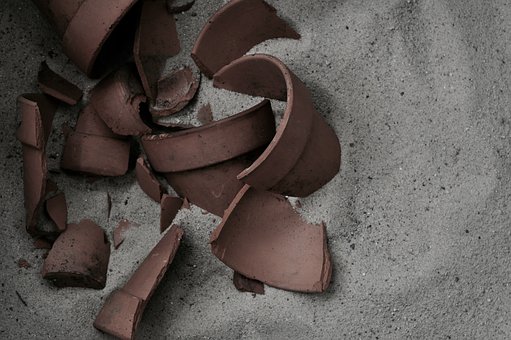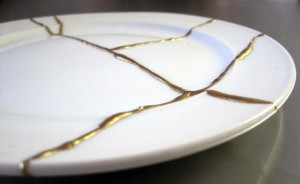 Two art techniques shed light on the spiritual principle of stepping out into the light–not hiding who we are or the fact that we’re broken. I blogged about Kintsugi before, and recently its similarities with another technique, Pentimento, caught my eye. Check out my article, published today.
Two art techniques shed light on the spiritual principle of stepping out into the light–not hiding who we are or the fact that we’re broken. I blogged about Kintsugi before, and recently its similarities with another technique, Pentimento, caught my eye. Check out my article, published today.
 When a friend struggles, it’s easy to respond with compassion. After all, life is tough. Nobody survives unscathed. Nobody is perfect.
When a friend struggles, it’s easy to respond with compassion. After all, life is tough. Nobody survives unscathed. Nobody is perfect.
So why do most of us try to cover up our flaws? You pretend you’re doing fine, and if that doesn’t work, you blame someone else.
What if, instead, you stop hiding your weaknesses and start embracing them? Your true self shows when you shed your safe disguise.
Two art processes cast some light on how to deal with imperfection.
The first is a 500-year-old ceramic arts technique from Japan, called “kintsugi.” You’ve probably admired it without knowing the name.
Kintsugi means golden rejoining. Shattered ceramic pieces are mended with a shiny resin. The potter smears gold or silver epoxy directly onto the cracks.
The wounds are not camouflaged. They are highlighted. The cracks become the focal point.
Originally, the broken pottery may have been quite ordinary. Something (or someone) else happened to it, smashing it.
The random lines of thick brilliant lacquer transform it. The once-shattered pot turns stunning. Beauty rises from the very place of injury.
When you are broken, God carefully glues the pieces back together, as a potter does. Isaiah writes, “Yet you, Lord, are our Father. We are the clay, you are the potter; we are all the work of your hand” (Isaiah 64:8).
He brings healing at the exact spot where you were most deeply hurt.
But sometimes your wounds come from your own mistakes.
The second technique, featuring two-dimensional art, is called “pentimento” from the Italian root word for repentance. While its beginning is uncertain, Leonardo da Vinci practiced it in the late 1400s.
Like repentance, pentimento involves change, and even accentuates the change. It doesn’t pretend that the finished product always looked so finished.
In this process, artists alter the composition of a painting or sketch without erasing the earlier strokes. They gloss over it with a light coat of paint or charcoal, showcasing the correction.
The artists don’t pretend it came out perfectly the first time. They leave evidence that they messed up, for all to see.
When you are broken, God can make you whole again. When you make a mistake or choose to sin, he can draw a better course for you. If you’re headed down the wrong path, he can redirect you to a new one, filled with blessing.
It doesn’t make sense to hold back anything from God, offering him only certain parts of your life. Give him access to all of it, the good parts you’re proud of and the parts you wish you could do over.
He gently takes it all and weaves it together to make something you could never imagine. He creates something glorious out of your life.
Your scars, those same scars you probably want to hide, make you even more beautiful in his hands. Because Jesus gave up his body to be broken and scarred, yours can be made new.
He brings beauty from the ashes. But not your beauty; it’s God’s beauty. When you reflect the potter’s glory, people see his grace — in you.
And when others see the display of his glory in your life, it can inspire them to come to him. Your hurts are redeemed in the potter’s hand and their hurts can be healed.
So tell your story — the real story. Expose the cracked, broken parts. Turn your pain into healing for someone else. Let others see the places where you changed your course and tell them why.
Come out from the shadows into the light.
Well said!
Thank you! I appreciate it.